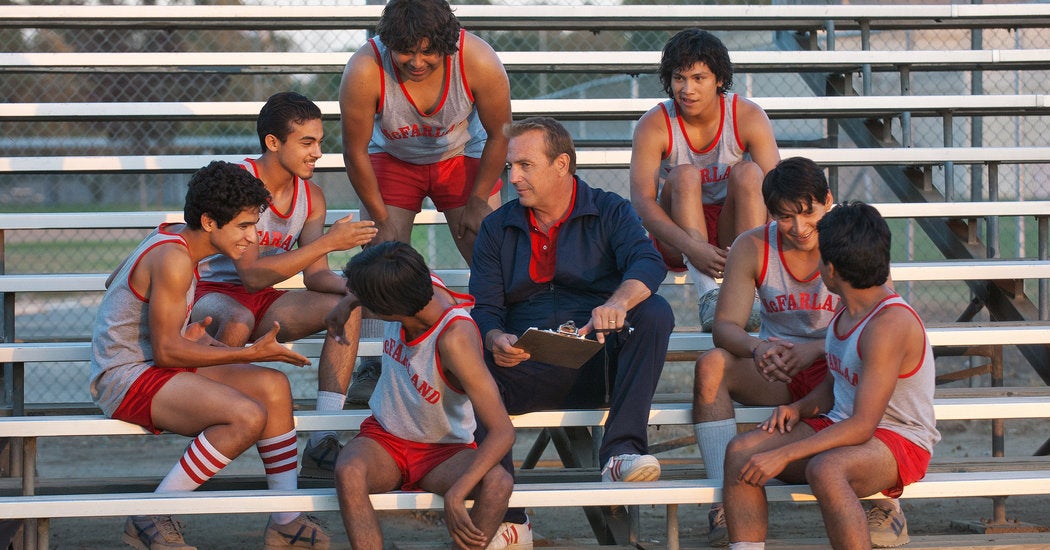What to Watch
Advertisement
Supported by
transcript
n/a
An entirely predictable, mostly honorable movie, “McFarland, USA” tells the story of a washed-up coach who turns a bunch of misfits into a team of champions. It’s “Hoosiers,” more or less, relocated to a poor agricultural town in California’s Central Valley in 1987. The sport is not basketball, football or baseball — the usual athletic pursuits in this genre — but cross-country running. The director, Niki Caro, who is originally from New Zealand and whose earlier films include “Whale Rider” and “North Country,” has an eye for dramatic landscapes, which lends some visual grandeur to the training and racing scenes.
She and the screenwriters (Christopher Cleveland, Bettina Gilois and Grant Thompson) also have a social awareness that blunts and complicates some of the clichés lurking in the story. “McFarland” is very much a heroic-teacher melodrama about a white coach leading a team of poor, nonwhite strivers toward glory, but for the most part it avoids the traps of condescension and self-congratulation that so often ensnare well-meaning examples of this durable genre. It also helps that the white coach in question — a real-life character whose actual surname is White — is played by Kevin Costner, for whom gruff compassion is by now second nature.
Jim White and his family — two daughters (Morgan Saylor and Elsie Fisher) and a wife (Maria Bello) — move to McFarland after he has been fired just about everywhere else. The first scene shows him losing his temper in a locker room in Boise, Idaho, and accidentally injuring an obnoxious player. Jim is less than fulfilled in his new job as a physical education teacher and assistant football coach until he spots a talented runner among his students and decides to organize a cross-country team.
The sport is dominated by mostly white, wealthy schools in places like Palo Alto, with fancy uniforms and lavish facilities. McFarland’s high school, which mostly educates the children of Mexican farmworkers, is across the street from a prison, and the surrounding area is flat and dusty, except for the orchards and fields where the students and their parents work. For hill training, there are mounds of almond hulls covered in tarps. Running shoes are a luxury none of the athletes’ families can afford.
“McFarland, USA” might recall the season of “Friday Night Lights” when Coach Taylor went to work in hardscrabble East Dillon. And like that series, the movie organizes its picture of the team and the town around a portrait of the coach. (His family plays less of a role, however. Cheryl White is no Tami Taylor, and Mr. Costner remains one of the last of the old-school movie patriarchs.)
We are having trouble retrieving the article content.
Please enable JavaScript in your browser settings.
Thank you for your patience while we verify access. If you are in Reader mode please exit and log into your Times account, or subscribe for all of The Times.
Thank you for your patience while we verify access.
Already a subscriber? Log in.
Want all of The Times? Subscribe.
Advertisement
